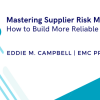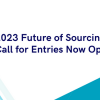- Do you truly know the source of all the materials that go into your product?
- Do you know all the services – including packaging, warehousing, transportation, waste management – that go into each of the elements that make up your product?
- Do you make the time to understand the working (and living) conditions of the workers in your suppliers’ factories? Do you look at the payroll practices and request transparency?
- Do you include rights and responsibilities, equality and trust training content to share with your suppliers?
- Are you willing to collaborate with peer buyers to identify co-development opportunities at the sources of supply and within the communities to help drive small business growth?
Addressing Ethical Supply Chains One Step at a Time – From Intent to Action
This month, the U.K. government alongside the U.S., Canada, Australia and New Zealand, raised the bar for companies “to conduct appropriate due diligence in their supply chains to identify, prevent and mitigate human trafficking” to remediate modern slavery. It is no longer enough to just be aware and acknowledge that companies expect every supplier to sign a code of conduct – companies also need to demonstrate the action and the impact.
This is where the rubber meets the road.
Understanding the modern slavery factors in your industry, your category and at the source is a process that organizations must take one step at a time. To begin, they should ask themselves these key questions:
Over the next few months, I will speak with practitioners who can give us a glimpse of what it takes to move from a risk-and-compliance initiative regarding ethical supply chains to truly driving impact. Our first guest is James Edward Johnson, Director, Procurement Operations Global Procurement, at Nielsen.
Padmini: James, what was your first step in tackling the issue of potential modern slavery in Nielsen’s supply chain? What did it take to get from tier-one to tier-two supply source identification?
James: The first step for Nielsen was to assess where we had risk. As a professional services company, we probably have lower risk than other industries. But every purchaser, from big multi-national corporations to households, has this risk. In large part because of our relationship with SAP Ariba and its partnership with Made In a Free World, evaluating forced labor risk was much more feasible.
Companies with big international agriculture, mining and other higher-risk industry inputs probably already have some suspicion as to where this risk is most salient. Whether we already have that suspicion or are in the dark, the type of data from Made In A Free World can help us focus on the industries and geographies where we can make the biggest impact.
Once you have that focus, getting to tier-two should not be that hard. You just have to ask your suppliers. Merely raising the concern about risks in the supply chain, and indicating that there is reason to dig deeper, will get them engaged. Depending on the industry, audits or site visits may already be common for tier-two suppliers, so getting the information about who they are and where they are located should be easy. If your tier-one suppliers won’t share that information, there are probably bigger problems in your relationship with them. There are many risks around quality, cost and timely delivery that should drive your suppliers toward transparency. Make sure they know that your effort is a cooperative one and you should get the support you need.
Padmini: When tackling tough problems like modern slavery and human rights from a corporate perspective, what drives alignment (or buy-in) with the company’s purpose and brand objectives?
James: Most big companies have programs for corporate sustainability, ethics and compliance. While those programs are often required for regulatory or government contracting compliance, they don’t stop there. Good efforts in these areas are often leveraged to improve the marketability of company stock or the commercial products offered by the company. That will often tie in to bigger themes in the company that will resonate with many people in many business units.
But even if doing good is not embedded in the company mission or brand, most people try to find a higher purpose in their work. This is particularly true among younger workers today. I’m a Gen X-er and I know many people in my generation who will connect more proximate goals to much bigger positive social goals. Among millennials, that desire to connect to something greater is even more present. Even if your company’s mission is not explicitly linked to doing good, your co-workers will be yearning for it and they’ll appreciate help in finding it if they are still searching.
Padmini: What would it take for companies to get from intent to action – or let me get more direct – are there cost and savings levers that can be impacted by purpose?
James: Nielsen, like most companies, is a for-profit business. I don’t make proposals that don’t show positive impact to the bottom line. The reality is that many alternatives that do good in the world are alternatives that are profitable. This is the basis of the free market – mutual trade that makes everyone better off. If you are making someone in your supply chain better off, there are probably benefits to you. People trapped in forced labor are often doing everything they can to just survive – which is often the bare minimum to comply with those who enslave them. People who enslave others have a demonstrated capacity to treat others without integrity or respect. Neither of these is improving your supply chain. They are increasing your costs due to quality problems, reliability problems, problems with timely delivery and so on.
Of course, once you consider the regulatory environment, these problems multiply. Laws against forced labor means that the use of slaves in your supply chain is a high-stakes game of corruption and major supply chain disruption.
Stepping back a little, we should understand that these dynamics are not limited to forced labor. Bringing purpose into business decisions ensures that your decisions are more strategic. Serving people in the broad sense – by making their lives better and more meaningful – reduces cost in many ways. Employees are more engaged when they understand how their work serves important needs in the world. Consumers are more loyal when they know that the things that they buy make the world a better place. Investors are less likely to sell when they see that their investments impact people in meaningful ways and lift them up together. Each of these means that we can be completely cynical and bottom-line-focused, but we should still do good for the productivity it yields.
Padmini: Can you share your personal quote/influence for impact in areas like modern slavery, diversity or transparency?
James: We should ask, “What game do I want to be playing?” If you want to play zero-sum games, don’t be surprised when you find yourself alone and depressed. Choose games where even the less well-off feel like they have won.
Consumers want to know more about what they’re buying and technology makes it possible for them to sort out the details. Do you want them coming to you or going to your competition?
Research shows that people aren’t any happier earning above $75,000, which begs the question, “What are you working for?” You might find purpose in doing good for those who struggle because they have far less.
Most of us were brought up thinking about how our parents would judge us. We need to start thinking about how our children will judge us. How will they evaluate our work and how we contributed to the world where they will live?
Clearly, large organizations, including Nielsen, are taking action to ensure that they are doing their due diligence to eliminate all the different types of risk in their supply chain. Getting into the minds of the consumers has helped Nielsen prioritize actions and make business decisions that are both financially sound and ethically fair.
Key takeaways: Find and assess risk based on data, engage in cooperative efforts with suppliers and attract and retain talent to help build sustainable supply chains.
Next month, I look forward to sharing perspectives on addressing equality in the workplace, inclusionary practices in support of livelihood and labor rights of people with disabilities – let’s continue innovating with purpose.
Region:









